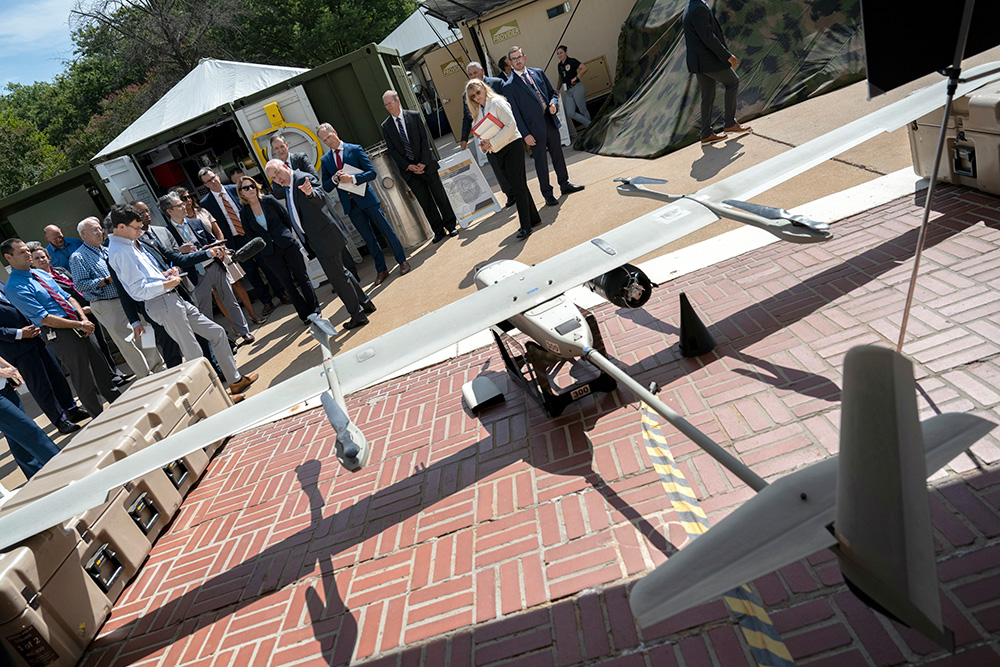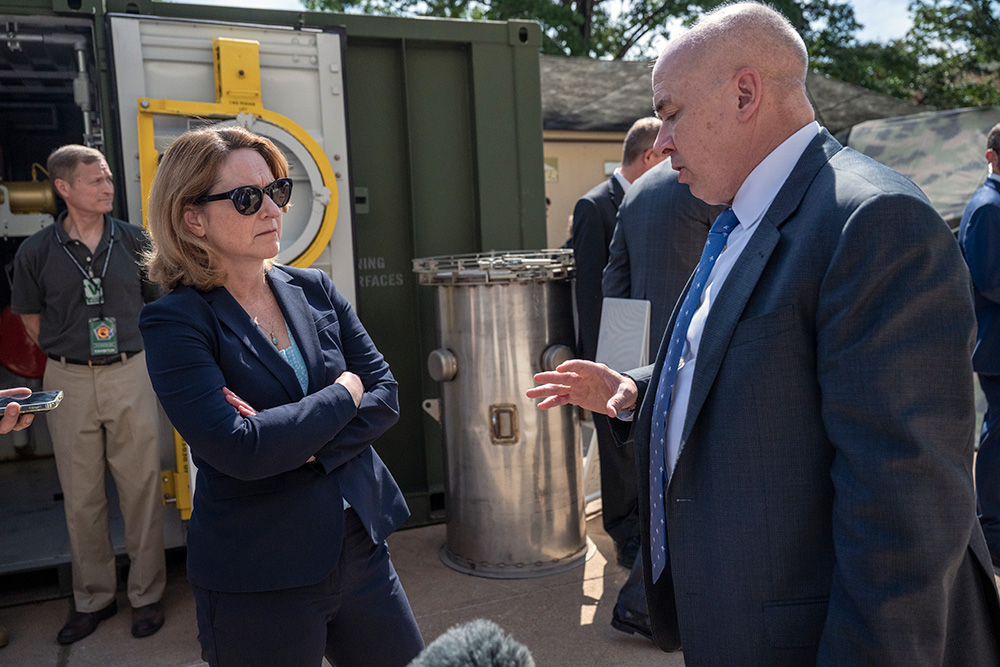For the past week, the Pentagon’s central courtyard resembled a giant science fair featuring the newest energy saving technology, and Deputy Defense Secretary Kathleen H. Hicks said she was impressed both by what this means for energy conservation and for warfighters.
The demonstrations in the courtyard were part of the Pentagon Energy Expo and featured contractors, Defense Department agencies, research labs and more. Hicks took reporters on a lightning tour of the courtyard and then spoke about the need for such innovation.
The deputy secretary has championed innovation in her many tours around the department and with contractors. “I have been to a number of sites — DOD and non-DOD — throughout the country to look at similar displays,” she said. “And I think just in general, I’m really blown away always by the incredible innovation that’s happening in the United States; and we in DOD want [and] need to be a part of that.”
Hicks saw a drone that ran on hydrogen, a tactical autonomous vehicle, a rechargeable expeditionary power source, and a tactical electrification kit in her walk around the courtyard. She passed exhibits that touted new methods of battery recharging, hydrogen fuel cells, solar cells and more.
Hicks said energy innovation “has to do with national security and what it takes to have the capabilities we need for the warfighter today and going forward. That alignment with climate goals is excellent for us.”
She said that her philosophy is that it’s not enough to simply save energy; a project must bring benefits to those on the front lines. At the electrification kit exhibit, she noted that the process saved fuel and allowed the vehicle to run more quietly and with a decreased heat signature.

Deputy Defense Secretary Kathleen H. Hicks tours the Pentagon’s Energy Expo, which showcases emerging energy technologies to advance the combat capabilities of the Joint Force, Sept. 21, 2022. © Lisa Ferdinando, DOD
“So, I would just point out that mission alignment, the warfighter purpose, and the view of climate as a national security challenge are fully aligned in cases like this,” she said.
The department is examining every aspect of energy from the tactical to strategic. This means more than simply an engine that uses less fuel, but the “on-shoring” of microchips to ensure the United States has the capabilities needed to distribute power. For deployed forces, this could mean power from solar panels or wind turbines. Hydrogen fuel cells could be adapted.
Research can look at developing batteries that last longer and are lighter. These could give military capabilities longer loiter times and greater ranges, she said. They can also develop electric micro-grids for deployed forces or for bases.
Hicks gave one concrete example featuring the venerable KC-135 refueling aircraft. “If we’re able to save about five percent efficiency on aircraft, let’s just say, — and that’s something that we’re working on now with drag reduction efforts on our KC 135 — that’s the equivalent of an entire aircraft’s worth of fuel, just if you looked at a fleet of 20,” she said. “That’s one fewer tanker that we need to fly.”

Deputy Defense Secretary Kathleen H. Hicks tours the Pentagon’s Energy Expo, which showcases emerging energy technologies to advance the combat capabilities of the Joint Force, Sept. 21, 2022. © Lisa Ferdinando, DOD
This could mean big savings — both economically and ecologically: about $35 million a year and a 125-kiloton reduction in greenhouse gas emissions, she said.
This entails a cultural change in the DOD, she said. “How do we make sure that folks understand demand reduction is fully aligned with, and supportive of, warfighter needs?” she asked.
Part of the answer could be found in a May memo she sent to the force directing the department “to prioritize energy demand reduction in all new systems acquisitions and upgrades to existing systems,” she said. “As I said, it’s good for the climate, but more important than anything here in the Department of Defense, it is essential for our warfighters.”





